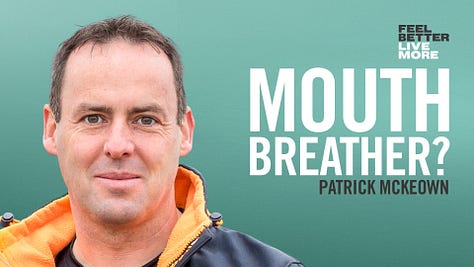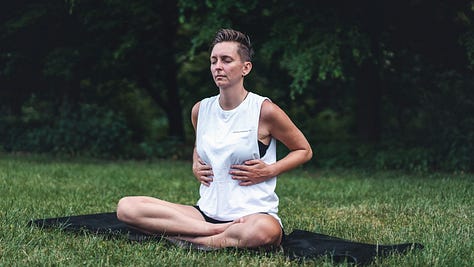Five years ago, I walked onto the Appalachian Trail (AT) for the first time. The AT is a 2,190+ mile long public footpath from Georgia to Maine. I planned to travel 30 miles in the Michaux State Forest in Pennsylvania. I would spend four days on the trail, camping in the backwoods.
I had done exhaustive research on the backpacking tent I should get, the cooking system, the water filtration kit, and the backpack. I had also exhaustively spent money to accumulate this gear. I’d watched endless reviews, read blogs, and lived on backpacker YouTube channels for a few months.
However, when it was time to go, I ducked into our garage and grabbed my well-worn, trusty Wolverine boots that I wore when mowing our lawn. They were rugged yet comfortably adapted to my feet. They had life in them, and I knew they could still handle the terrain. Never mind that the conditions, my pack weight, and the length of time in my boots were all different from mowing, my footwear was a footnote in my preparation.
I’ll cut to the chase to say that while I slept warmly, drank clean water, and ate well, the blisters on my feet took close to three months to heal.
I had obsessed about the wrong things. While I would be camping, filtering water, and eating, off and on, I would be walking nearly the whole time. I wasn’t going to get anywhere without walking. My footwear should have been priority one. Instead, it was somewhere way down the list.
In my defense, I felt like I knew all there was to know about walking. While I’d never done a hike like this, I had been walking for nearly 50 years.
We might think we have the basics down and can now move on to more intricate things, but we realize later that not reviewing the basics eventually gives us problems in many other areas.
Breathwork
Enter the world of breathwork. Maybe you’ve noticed over the last decade that breathwork has become an area of study and focus for mental and general health. There are breath coaches, breathwork practitioners, and classes one can take. A landmark book by James Nestor entitled Breath: The New Science of a Lost Art came out in 2020, just as the importance of breathing soared to the forefront of our minds during Covid.
And yet, I can understand why we’ve made it the last thing we grab out of the garage on the way out the door. What is there to learn?
But I contend we have plenty to learn and even more, we need to relearn.
I think I can hear you. You’re talking about breathing? Inhaling and exhaling? The thing that is, among other things, autonomic in humans. We do it without thinking. Are people studying that? Talking about it? Ok, but I think I know how to breathe. Yeah, I did, too.
We’ve gone backward
Nestor's book explores the importance of breathing and its impact on our health. The book's main argument is that many modern health problems can be attributed to improper breathing habits and that rediscovering and practicing proper breathing techniques can lead to numerous health benefits.
So, even if we’ve done it well, Nestor argues, we have experienced a devolution in our breathing. In the modern era, we share something called “email apnea or screen apnea,” a temporary cessation of breath or shallow breathing while working (or playing) in front of screens. This, among other issues, makes going back to the basics necessary.
Next time you’re immersed in an email, try to notice how you’re breathing. You may not be doing as well as you know how. Seated with our eyes trained on pixelated details, we can stop breathing in short bursts of time. And given our hours hunched over screens, this possibly becomes a dominant breathing pattern for our day. Imagine routinely making breathing, a massively important thing, less effective for six to ten hours a day. It becomes our new habit whether we realize it.
More than optimal functioning is affected; withholding our breath throws the nervous system into fight-or-flight mode. Since most of our waking days are in front of screens, is it any wonder that anxiety and stress trends have skyrocketed? It may not be anything more than our breathing that’s put us in exhausted cycles of worry.
This hardly scratches the surface of breathing devolution. Trauma and high levels of dysfunction in ourselves and others have led to a decline in our ability to get out of fight or flight.
The great news is we’re rescued from fight or flight simply by a few minutes of deep belly breathing. While shallow breathing automatically triggers anxiety cycles. Our bodies are amazing, but when we go into fight or flight, our body doesn’t know if we’re attending to an annoying text or being chased by a bear; it simply sends us into rescue mode.
Your invite to breathe
So, I’m inviting Feral Souls to breathe.
The worth challenged may think that’s not enough. You may think in your downtime, in rare moments of self-care, you need to think on scripture, confront injustice, contemplate your Creator, create art, heal the world, and become a better person. Our path to those things (to steal from the airline boarding spiel) comes from putting our oxygen mask on first and then attending to the broader world and our function in it. Self-care isn’t selfish if it’s the first step to helping the world.
We only consider our breathing when it’s not happening or if it’s labored. “Let me catch my breath” is an expression when something has gone wrong. But to turn our attention to enhancing our breathing, even if it’s satisfactory, could be just the move to help your life. Being less exhausted and more emotionally regulated has enormous upside.
The spiritual side of breath
Breath is the first thing checked by doctors when we enter the world. We’re swatted on the rear if it’s not happening. It’s one of the final things we stop before we pass into the next life. It’s a gift that ties us to the first man and back to our Creator. The moment-by-moment reliance on it can be a natural reminder of our fragile existence. Simply put, breathing is our first spiritual practice.
Regulated breathing is a way of living that ensures the world hasn’t squeezed us into a harried scramble for the worth that takes our breath away. It’s a way to defend against the cruel encroachment on our Creator’s value of us. If we breathlessly chase our worth, it’s no wonder we’ve forgotten how to breathe with our God-given ease.
Below is a cleaning house of resources around breathing. One thing I use is a Calm Strip with a boxed breathing prompt. I received a few of these and have put them in places to practice wherever I am.
As my index finger traces the soft sand-textured path, I do each action for four seconds, activating a relaxed state by design.
Check out the resources below and be well, Feral Souls.



Left to right: Black Girls Breathing, Oxygen Advantage, Breathwork Alchemy




